Reading – Definitely Worth a Visit
Reading is usually not even close to the top 10 cities to visit in the United Kingdom when most tourist’s prepare their itinerary for this great country. It certainly wasn’t on mine as Alison and I prepared to spend a few days in Bath, a city that is definitely on the top 10 list. We had just completed a magical week in London with our daughter Lenore and grandson Brock. They were headed back to Canada and we had four days by ourselves, three of which we would spend in Bath. As luck would have it, the train schedule out of London to Bath went through Reading and as our stay in Bath wasn’t to start until the next day I thought ‘What the hell.’ and booked a hotel in Reading. It turned out to be a great if somewhat serendipitous decision as Reading far exceeded our modest expectations. Here’s why it is definitely worth a visit.
History of Reading
Most of the reasons for visiting Reading centre around its past which has played an outsized role in the history of England dating from pre-Roman times right up the 20th century. While technically the settlement of Reading did not occur until the 8th century, there was a very important Roman site very close by. Calleva Atrebatum was an Iron Age oppidum (Celtic settlement) that the Romans took over and remade into a major fortified city. Usually referred to as Silchester, this is a model of the place that you can see in the Reading museum which we will visit later in this post. Aside from the impressive buildings within the walls there was a full scale amphitheatre on the outside.
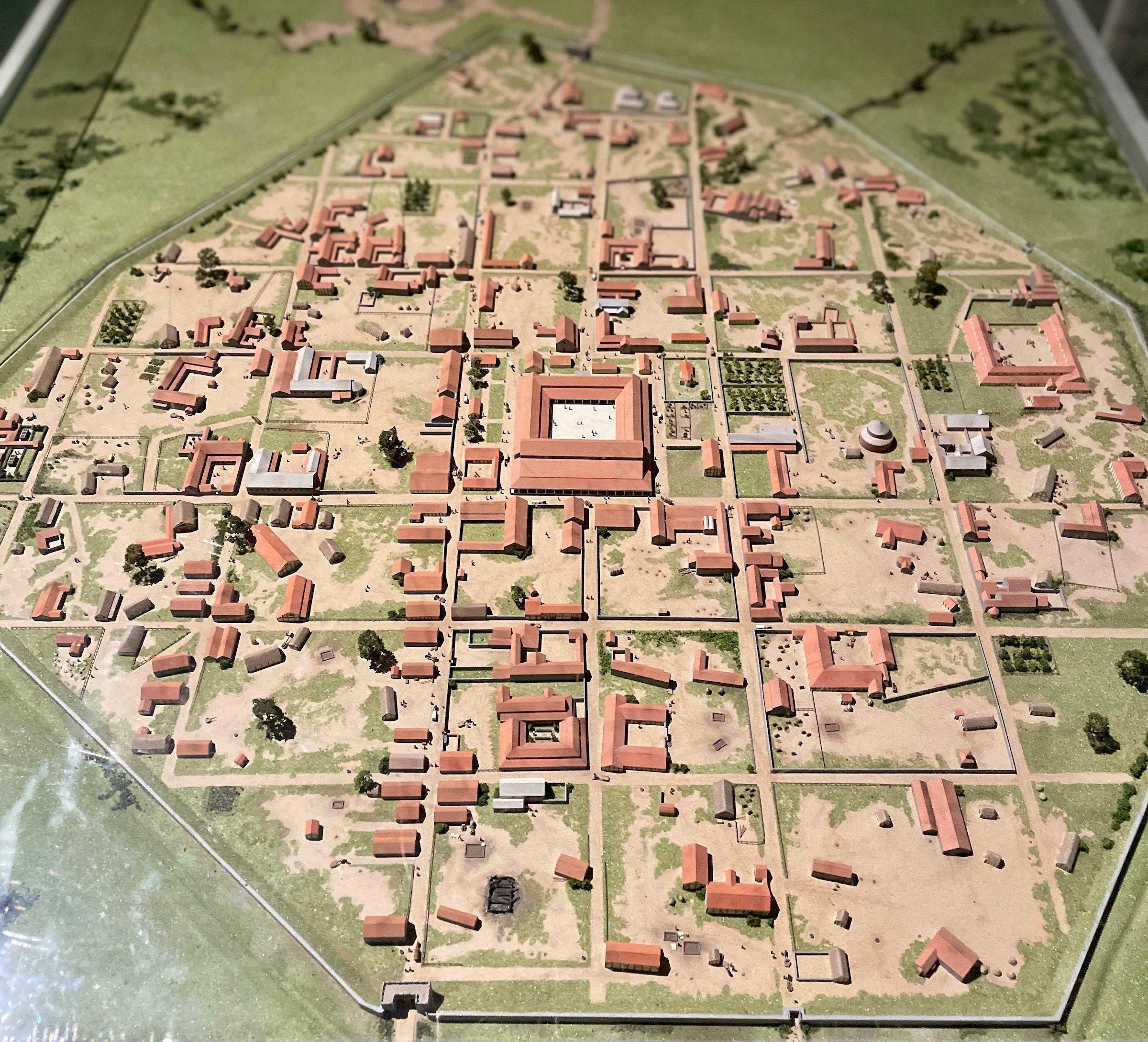
Unlike most Roman settlements after the departure of the Romans from Britain in 409 after 350 years of occupation, Silchester was not incorporated into a later settlement such as at London, York, Bath and Chester. The result was that the place simply faded into obscurity, but at the same time leaving one of the best Roman archaeological sites in Britain. You can still see the city walls and the remains of the amphitheatre today. I wish I had known this before visiting Reading as I would have made a point of visiting them. Unfortunately for me, I only learned about the existence of Silchester on a visit to the museum, but the reader of this post has no such excuse.
The history of Reading proper began with the Anglo-Saxons in the 8th century and the name literally means ‘The Red One’ coming from a person named Reada. In 871 it was the site of one of the great battles between the Anglo-Saxons and the Vikings in which King Ethelred and his brother Alfred were defeated by the invaders. However, as any student of English history knows, Alfred as successor to his brother, proved a match for the Vikings and made Wessex the foundation of modern England.
After the Norman conquest Reading really came into its own when Henry I founded Reading abbey in 1121. For over 400 years it was one of the great monastic houses of Britain, attracting pilgrims paying homage to Henry, who is buried there. After Henry VIII dissolved the monasteries and redistributed their wealth, mostly to himself, Reading could have faded into obscurity as many monastic settlements did, but instead it prospered on the cloth trade. It was put under siege during the English civil War and was also the site of one of only two battles that took place in 1688 as part of the Glorious Revolution that ousted James II in favour of William of Orange. The Battle of Reading was not much more than a skirmish, but the fact that the people of the city joined in the fighting against James’ forces was notable.
During the Industrial Revolution Reading became a major manufacturing centre and we’ll learn more about some famous Reading products when we visit the museum.
Lastly, Reading was the site of the notorious Reading Gaol about which its most famous prisoner, Oscar Wilde wrote one of his best known works.
So a lot has happened in Reading over the last two millennia and let’s start exploring starting at the museu.
Reading Museum
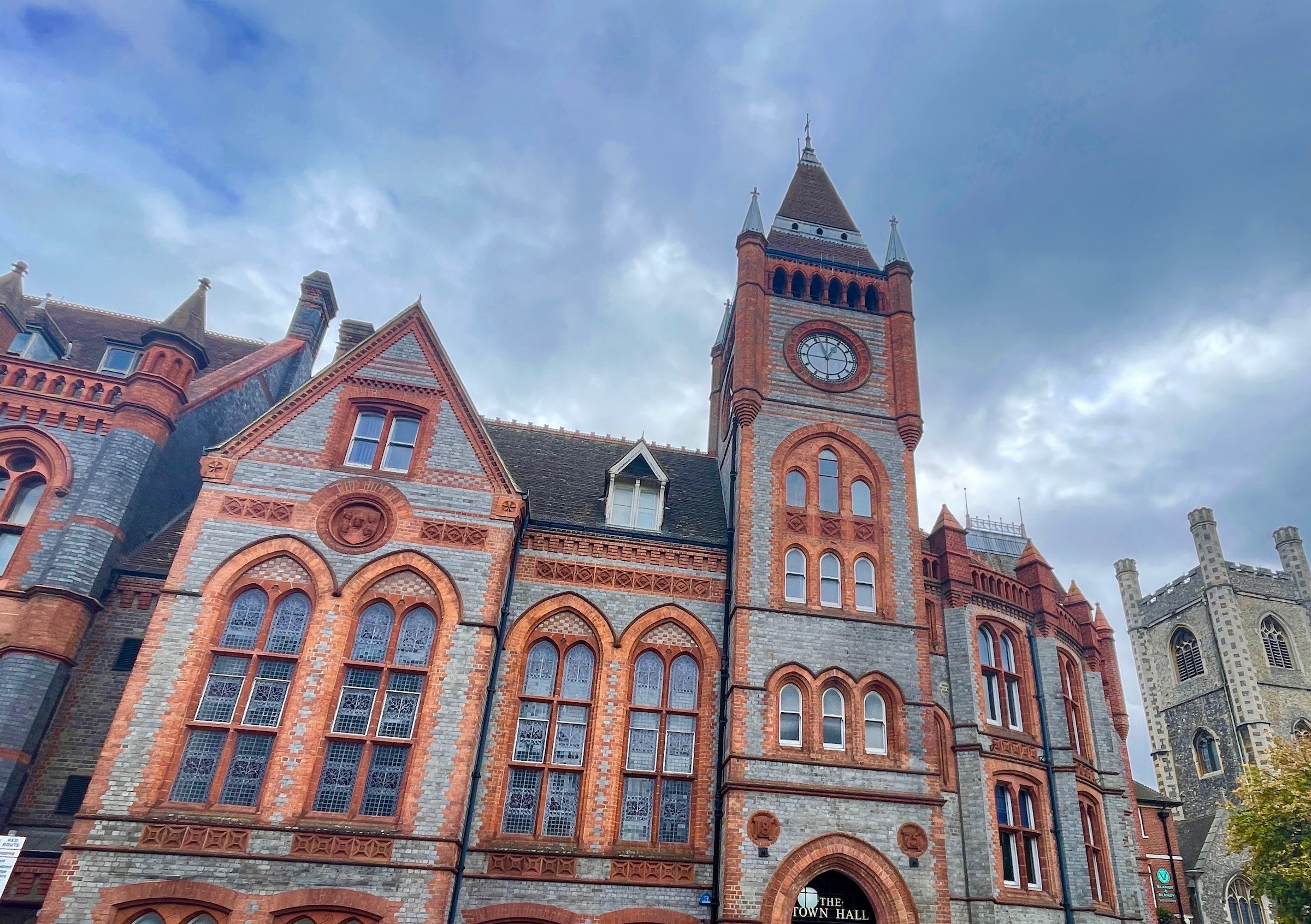
The Reading Town Hall is an eclectic structure that has immediate eye appeal. It was completed in 1875 with the addition of the clock tower and council chamber that wrapped around an older building. It is the work of Alfred Waterhouse who designed many of the best 19th century institutional buildings in Britain including the Museum of Natural History in London. Never a slave to one type of architecture, he used red and gray bricks made locally to create a really unique looking building exterior.
The Reading Museum takes up a substantial portion of the Town Hall building spread over a number of floors. If you are expecting a gloomy, musty place with a lot of stuffed animals then you will be pleasantly surprised. Yes, there are some stuffed animals, but overall the museum is very modern and informative.
Perhaps the most surprising thing to find here is a full scale replica of the Bayeux Tapestry. Completed in the late 19th century it is an exact replica and unlike the original which you have to stand on a moving sidewalk to see, you can spend as much time as you want looking at any particular panel. This is one of the more famous ones depicting the death of King Harold.
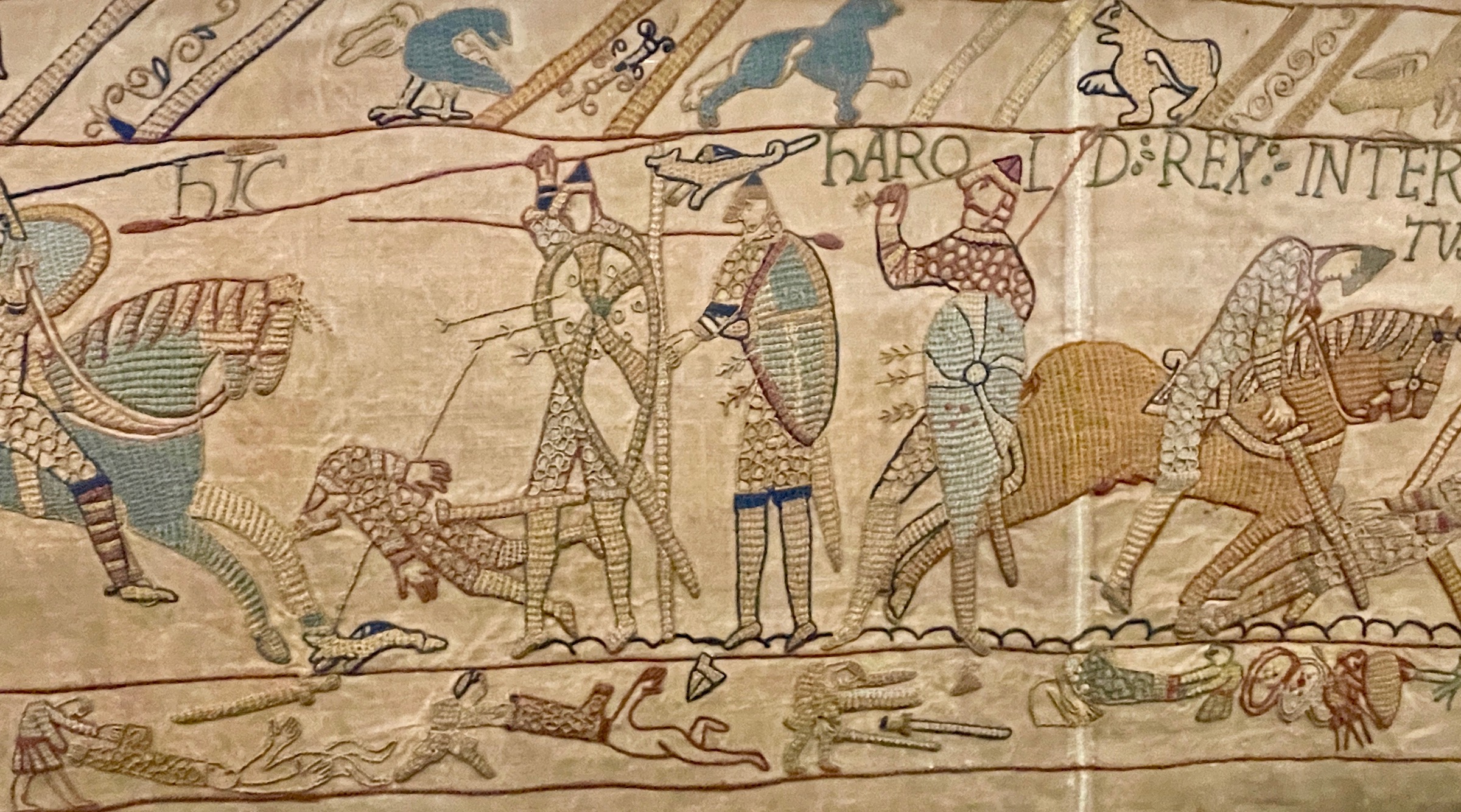
If you are an armchair traveler, but would still like to know more about this famous tapestry the Reading Museum has a complete panel by panel description available here.
Of particular interest to archaeology fans will be the extensive exhibit on the Roman settlement at Silchester. There are several mosaics on display such as this floor. While it’s not a big deal to see Roman mosaics in Italy, Greece or Turkey, it is a bit hard to get your head around the fact that there were Roman villas in Britain, hundreds of them and that archaeology has barely scratched the surface of what might be unearthed.
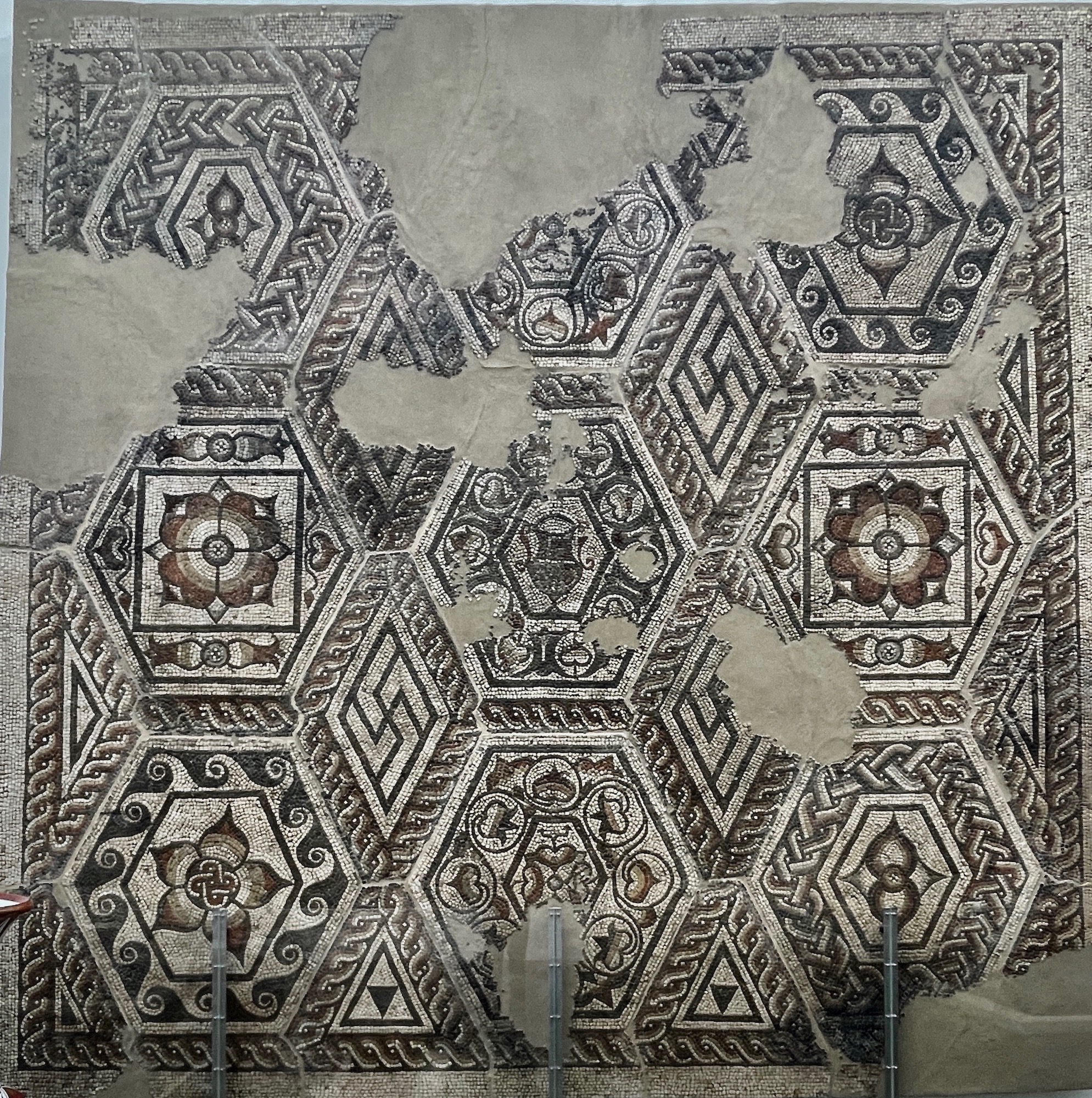
Also not really expected in Britain are Roman sculptures such as this one representing the head of the god Serapis who originated in Egypt and was venerated by the Ptolemaic pharaohs. The fact that the cult of this composite god made its all the way to England from Egypt tells you something about the extent of the Roman Empire and how it operated as a conduit for not only trade, but ideas and beliefs as well.
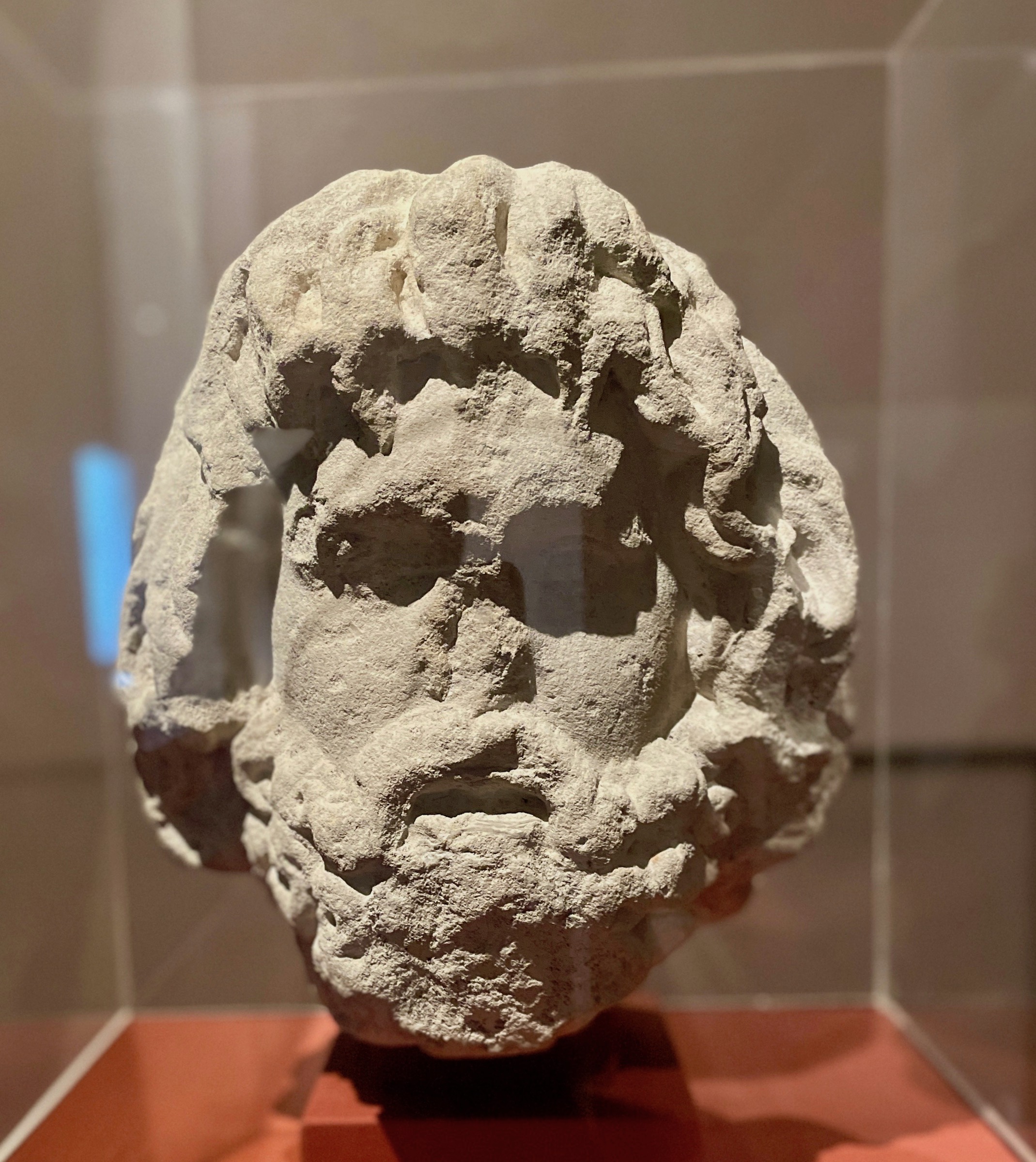
I mentioned that Reading was a renowned manufacturing centre well into the 20th century and the Reading Museum celebrates many of the products the city was famous for, none more so than cookies and biscuits. Huntley and Palmer’s was the largest manufacturer of biscuits in the world for over 150 years. The company was particularly known for its colourful and very collectable biscuit and cookie tins. The museum has a vast collection of them on display.
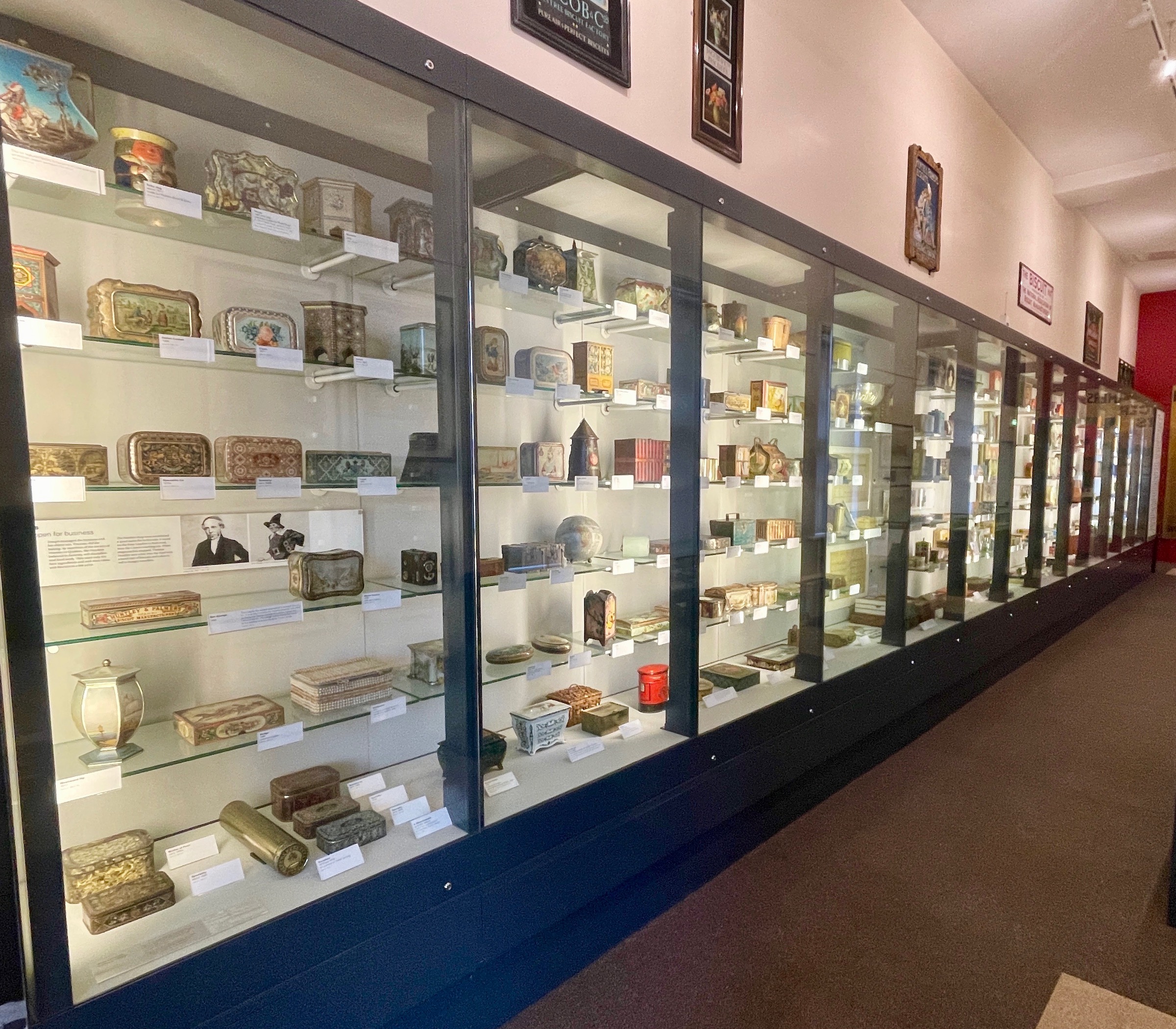
They are definitely worth a closer look. See if you can guess the early TV shows some of these tins depict.
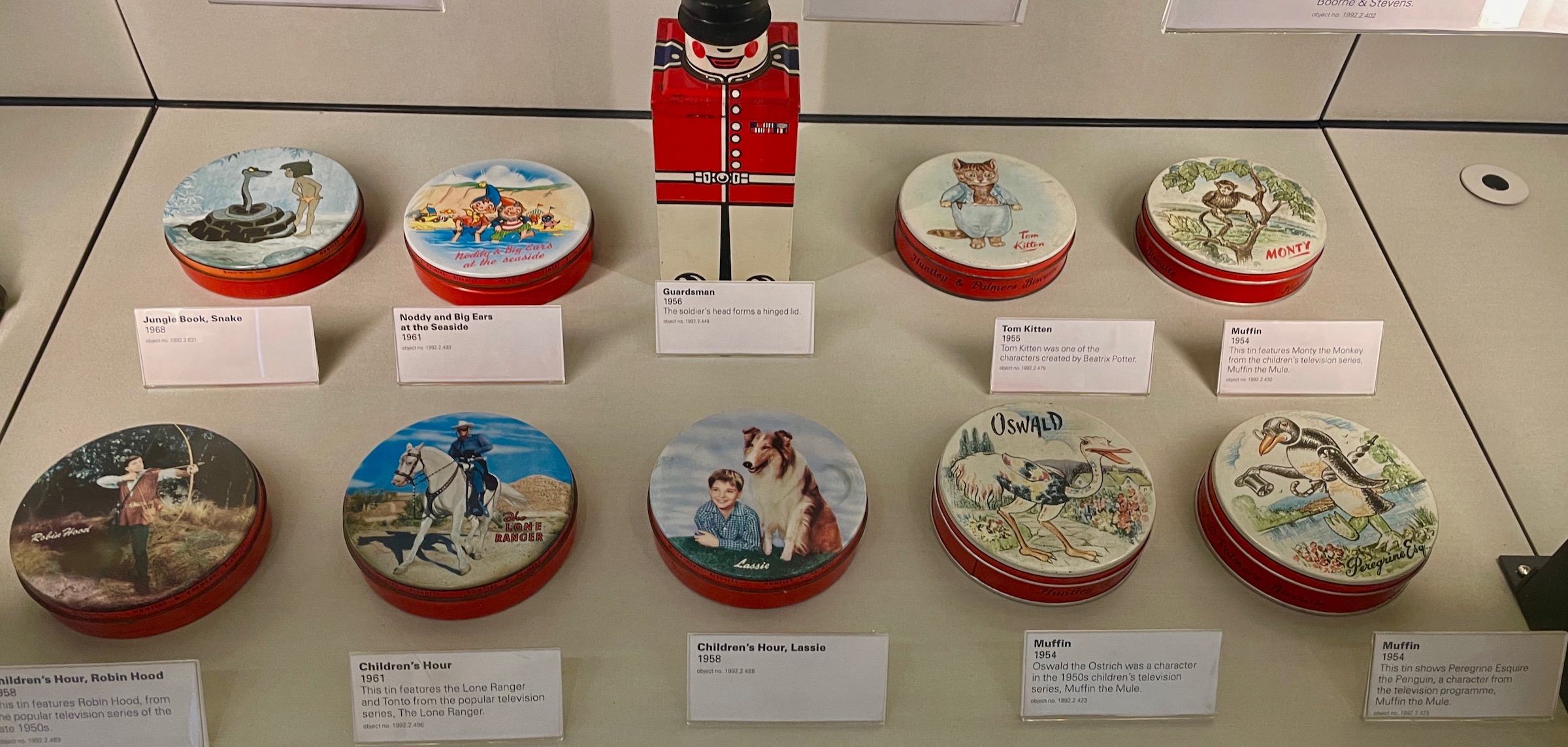
Once you are finished browsing the exhibits make sure to stop at the museum gift shop where there are some very unique gift ideas.
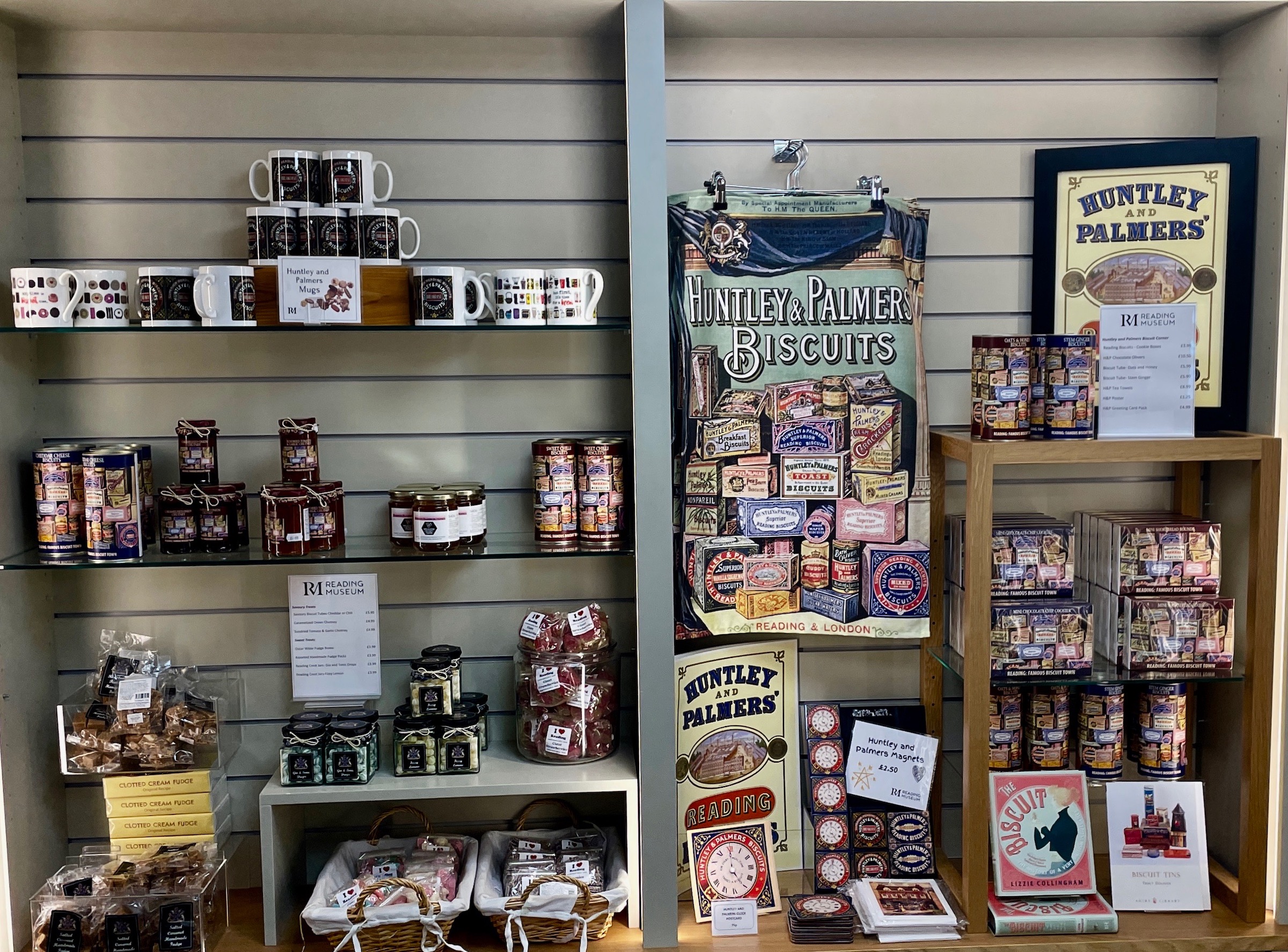
The museum is directly in front of what is known as the Abbey Quarter of Reading where you can continue your explorations following very well interpreted walkways to the ruins of the abbey.
Reading Abbey

Henry I was the fourth son of William the Conqueror and an unlikely successor, but after the death of his brother William Rufus the legitimate successor, Henry was able to seize the throne and reign for 35 years. He is considered to be one of the more important British monarchs known particularly for putting in place the foundations of what became the ‘common law’ system that is the basis for many legal systems around the world to this day.
Despite being a notorious womanizer with many illegitimate children, he was also quite religious and in 1121 founded Reading Abbey which had an excellent location near the conjunction of the Thames and Kennet Rivers. It housed many relics including the alleged ‘hand of St. James’ that drew pilgrims from all over the British Isles and beyond. When Henry died in Normandy in 1135 his body was embalmed and brought to the abbey for burial which attracted even more pilgrims. But here’s the really interesting twist to the story. Reading Abbey was fabulously rich with lands throughout England and Normandy. When Henry VIII dissolved the abbeys and monasteries between 1536 and 1541, Reading was a prime target. The abbot of Reading, Hugh Faringdon was found guilty of treason and drawn and quartered. The abbey was then razed to the ground so effectively that the actual site of Henry I’s entombment was lost and to this day he remains the only British monarch since the conquest of 1066 whose corporeal body is nowhere to be found. The group which established with certainty that Richard III’s remains had been located under a parking lot in Leicester in 2012, used the same scientific methods on the Reading Abbey grounds, but had no success in locating Henry I.
In the 21st century much has been done to stabilize the ruins of the abbey and to make it a tourist destination. So let’s leave the museum and head there now.
The first stop is at the only building spared destruction by Henry VIII’s forces. This handsome stone structure was the Hospitium or guesthouse of the abbey where important visitors were put up during their stay. It later became a boy’s school for almost 400 years until taken over by the University of Reading. You can see that it actually abuts the back of the Town Hall and apparently was once much larger, occupying much of that site as well. It is not open to the public.
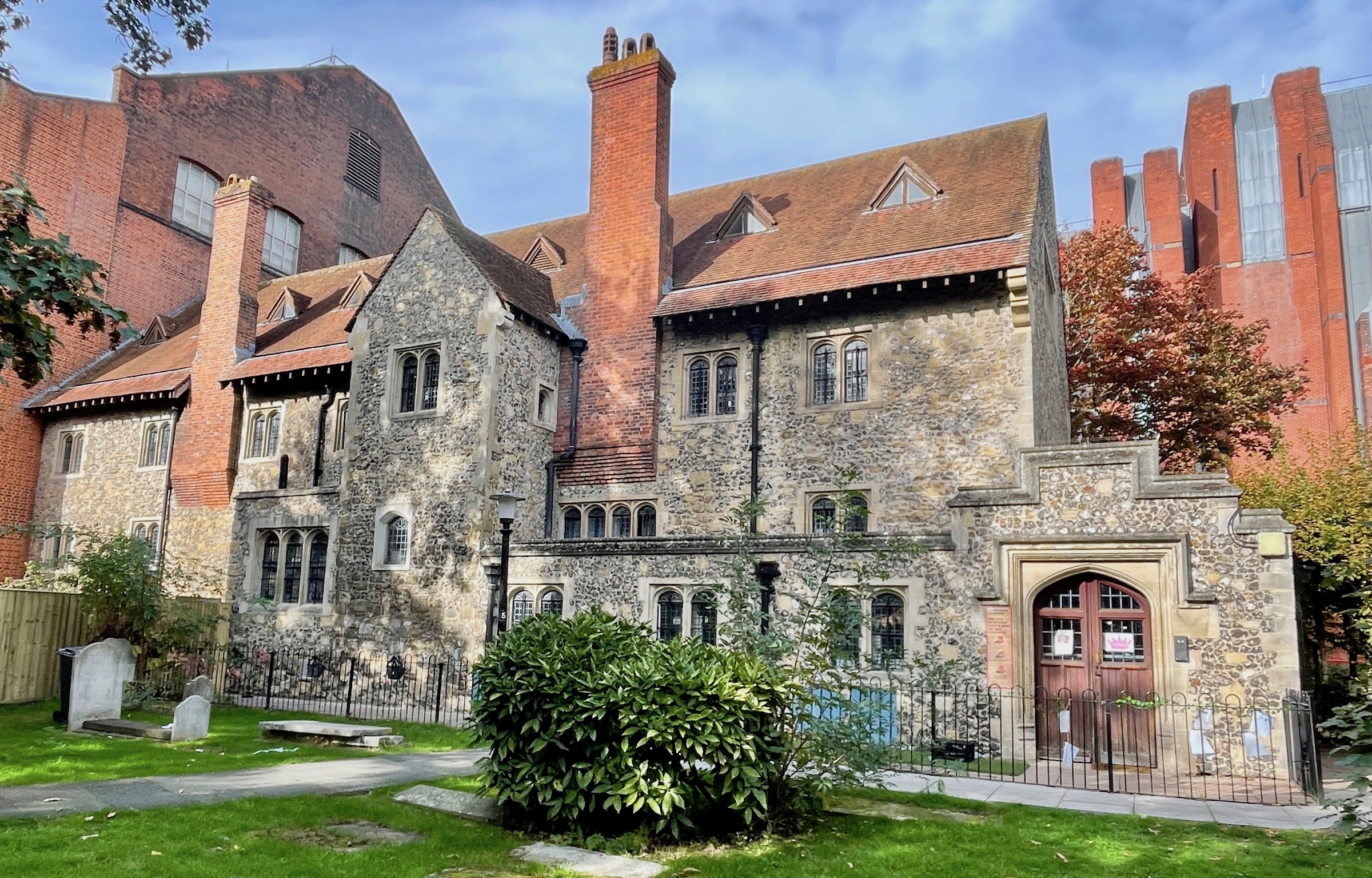
The path to the abbey ruins next passes through a small cemetery which was donated to the community by Mary Tudor after her father closed the abbey grounds to burials. This interesting abbey fragment has been relocated to the cemetery for reasons unknown, but it does make for a good photo op.
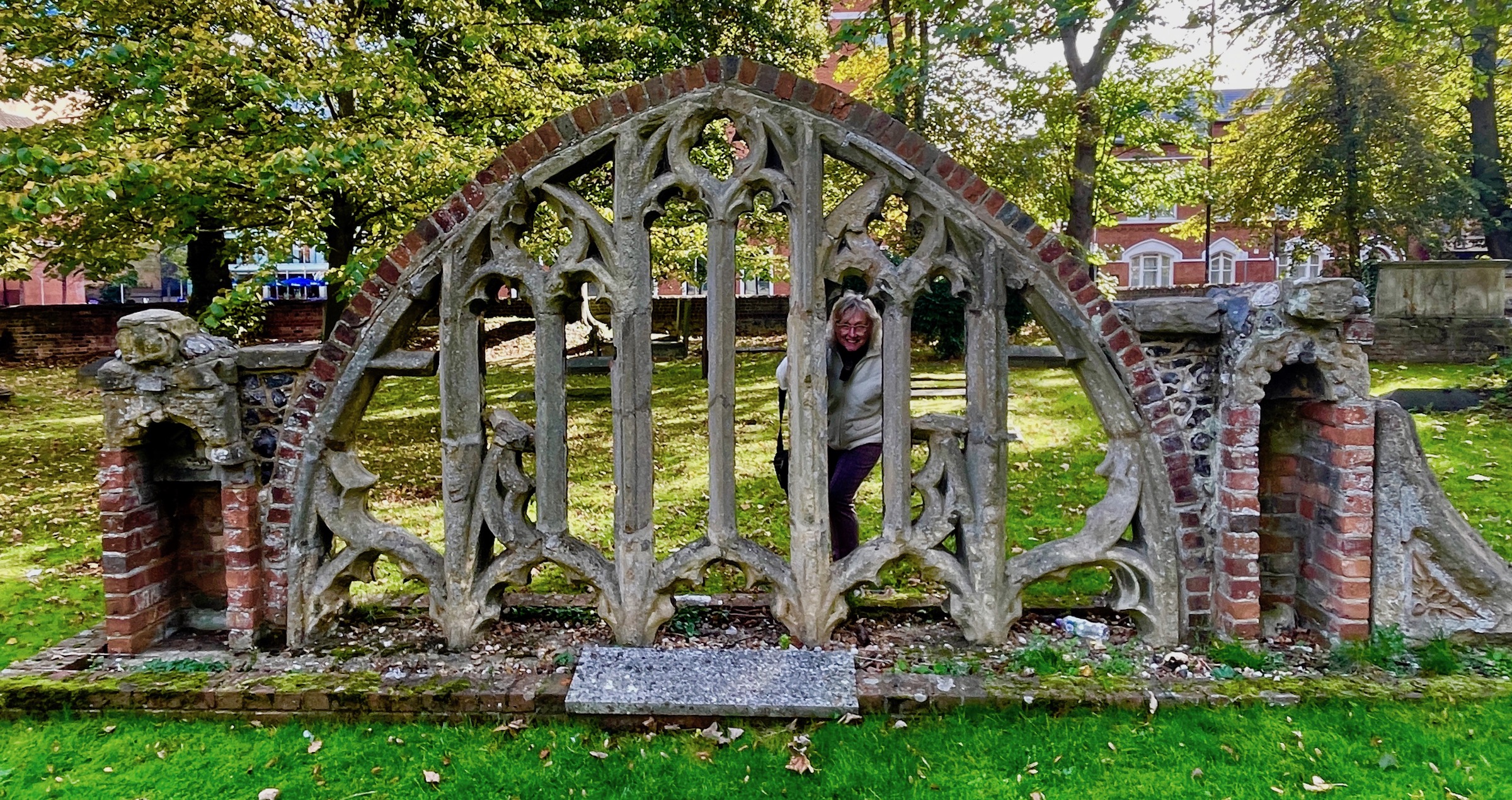
In terms of graves there aren’t many, but this one stands out. Further investigation reveals that the unfortunate Mr. West was a carpenter working on the roof of the nearly completed Reading railway station when a mini-tornado came out nowhere, ripping off the roof and carrying it and Mr. West hundreds of feet away before coming back to earth. Neither the roof or Mr. West survived the ordeal.
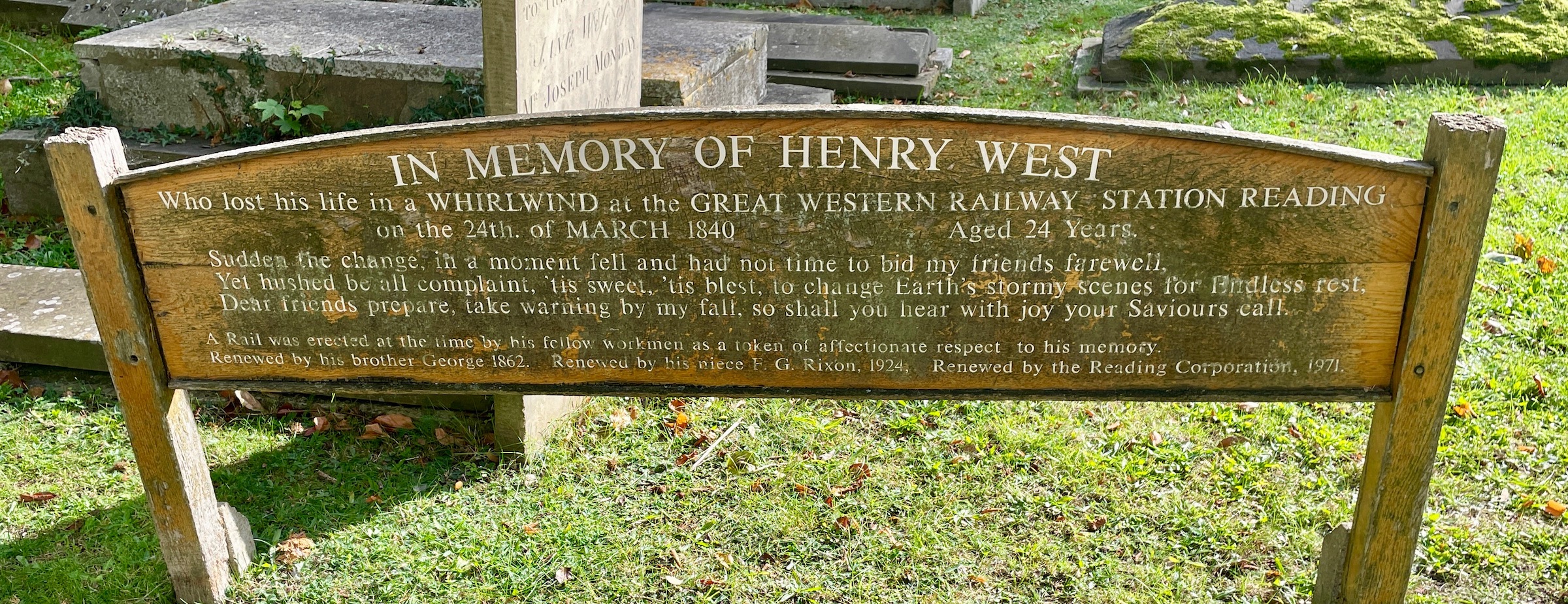
The pathway next takes us from the cemetery into Forbury Gardens which is located on what was once the outer courtyard of Reading Abbey. Here you will find the most famous monument in Reading, the Maiwand Lion. It commemorates the deaths of 328 members of the Royal Berkshire Regiment who were killed at the Battle of Maiwand in Afghanistan on July 27, 1880. A British and Indian force of about 2,500 troops engaged an Afghan force ten times that size and the result was disastrous for the British and Indians who lost almost a thousand men in the battle and subsequent retreat. It was one of the worst defeats for the British Empire in the ‘Great Game’ that had been playing out between the British and the Russians for control of central Asia throughout the 19th century.
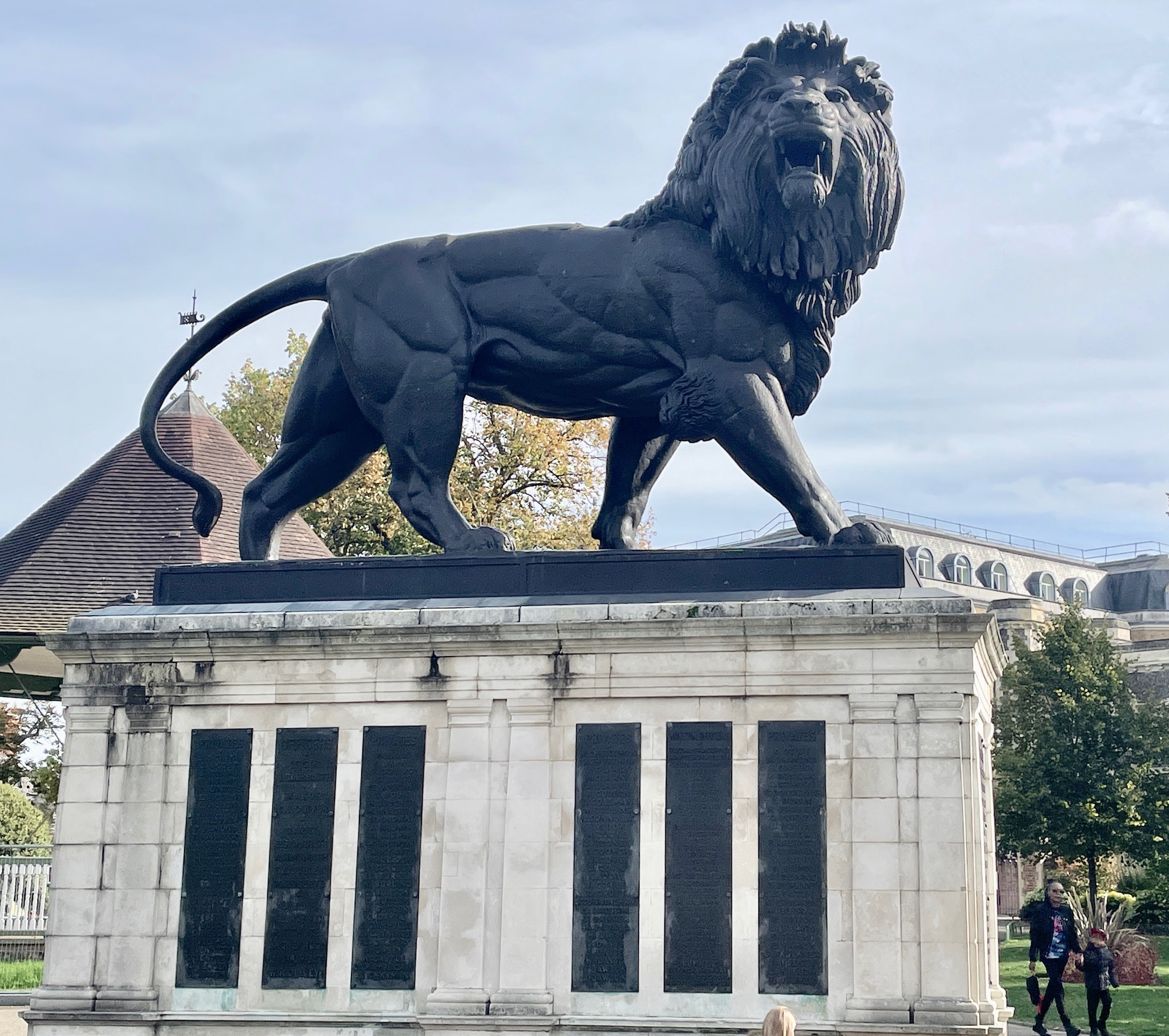
I couldn’t help but think of a similar lion monument I had seen only a few months earlier in Lucerne, Switzerland commemorating the deaths of about 760 Swiss Guards in Paris during the French Revolution. What is it about losing battles and lions?
After this interesting intro Alison and I arrive at the Reading Abbey ruins proper. The area is very well signed so that you know exactly what you are looking at and understand how the abbey was laid out.
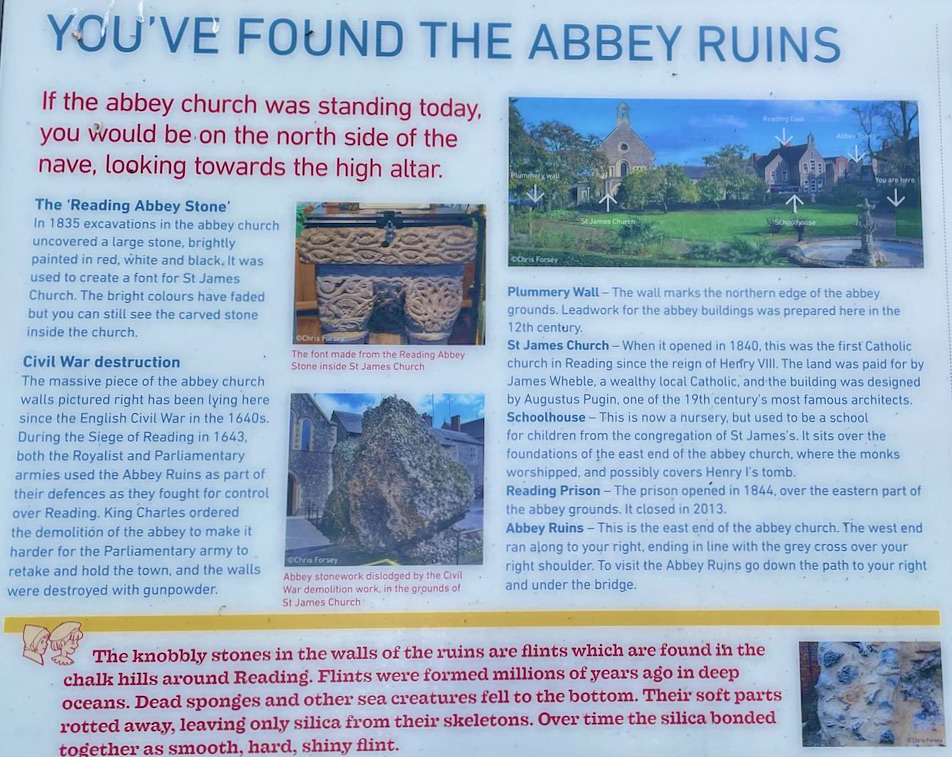
For ease of reference I include this map showing the original layout of Reading Abbey and the location of the ruins of the actual abbey.
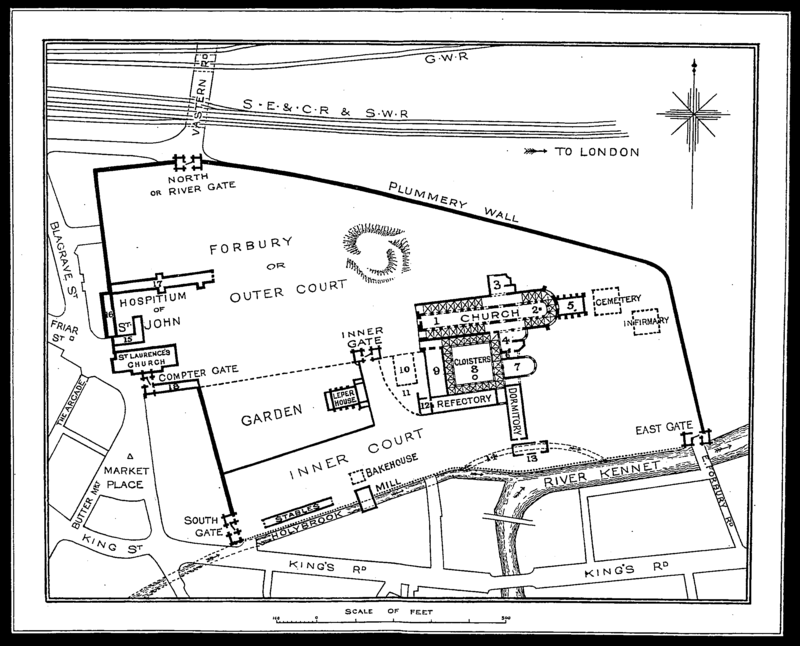
The only thing to see today are ruins, but there is a romance to them that is undeniable.

This is all that is left of one side of the transept.
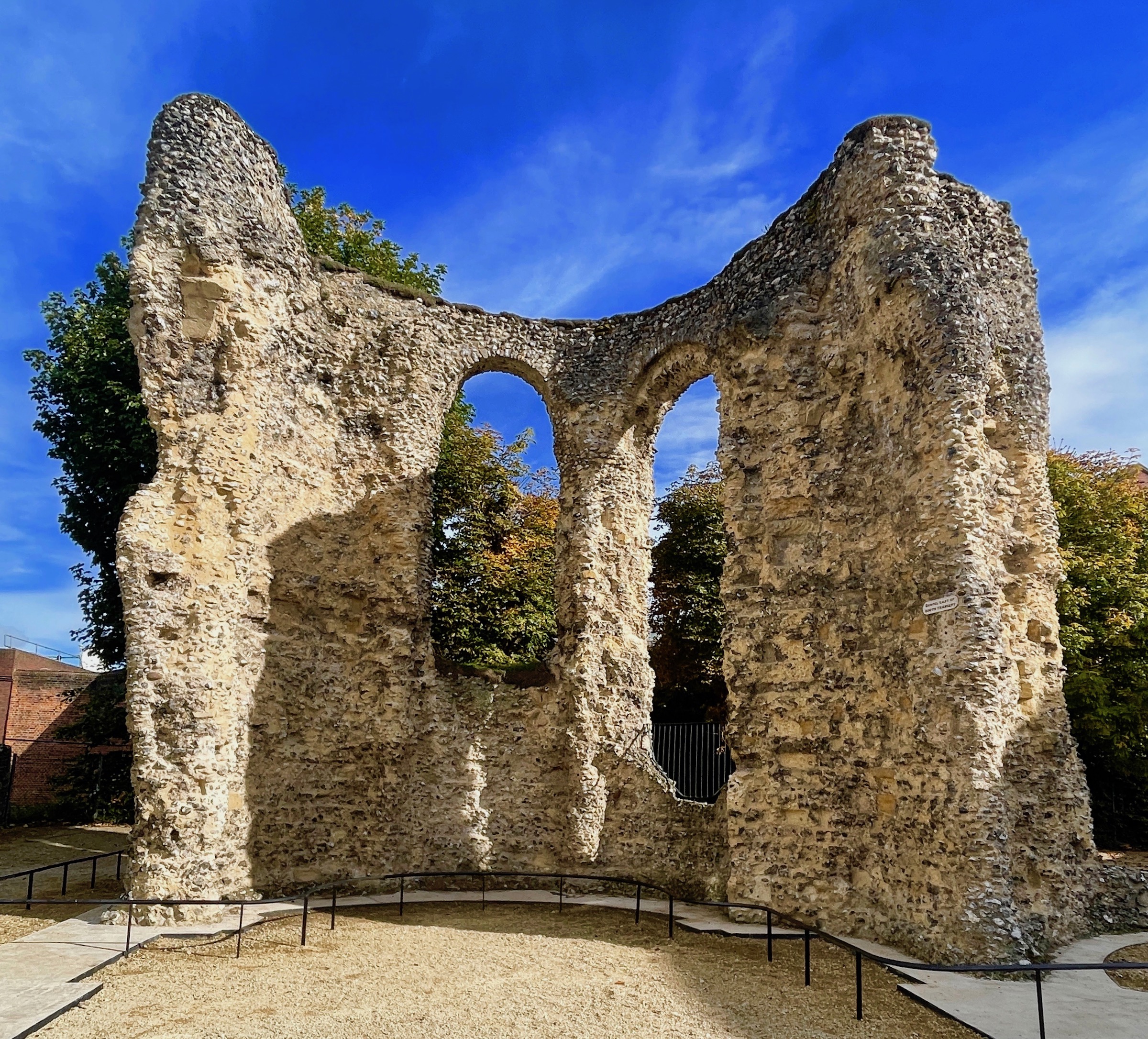
As noted, Henry I is (was) buried somewhere on these grounds and that definitely adds an air of mystery to the place.
In the museum we had looked at this painting by Harry Morley depicting that glorious event.
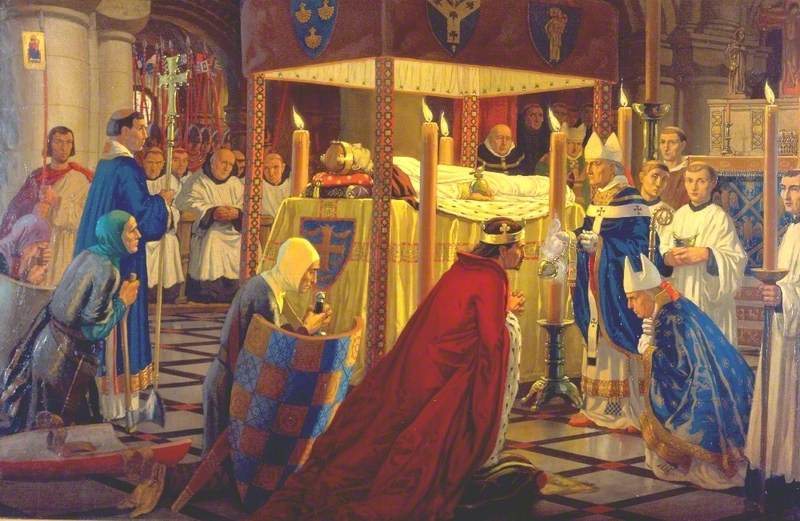
Now almost 900 years later, the best that historians can say is that he was buried ‘near’ the spot where this plaque was put up in 1921. The adage “How the mighty have fallen.’ definitely comes to mind.
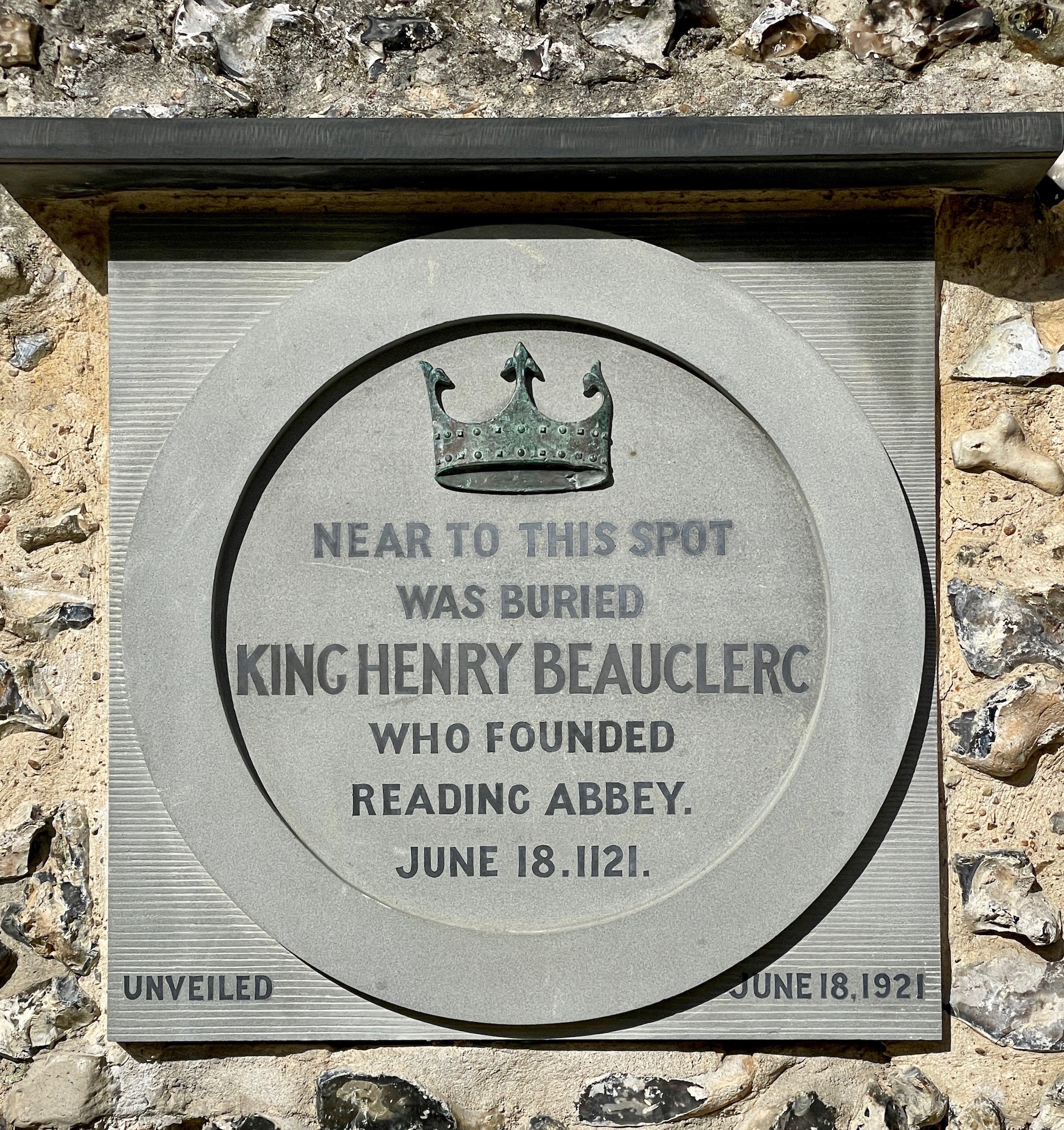
We do know that Henry’s body was brought from Normandy to this very spot on the Kennet River where the abbey wharf once stood. Now the name has been appropriated by an apartment complex.
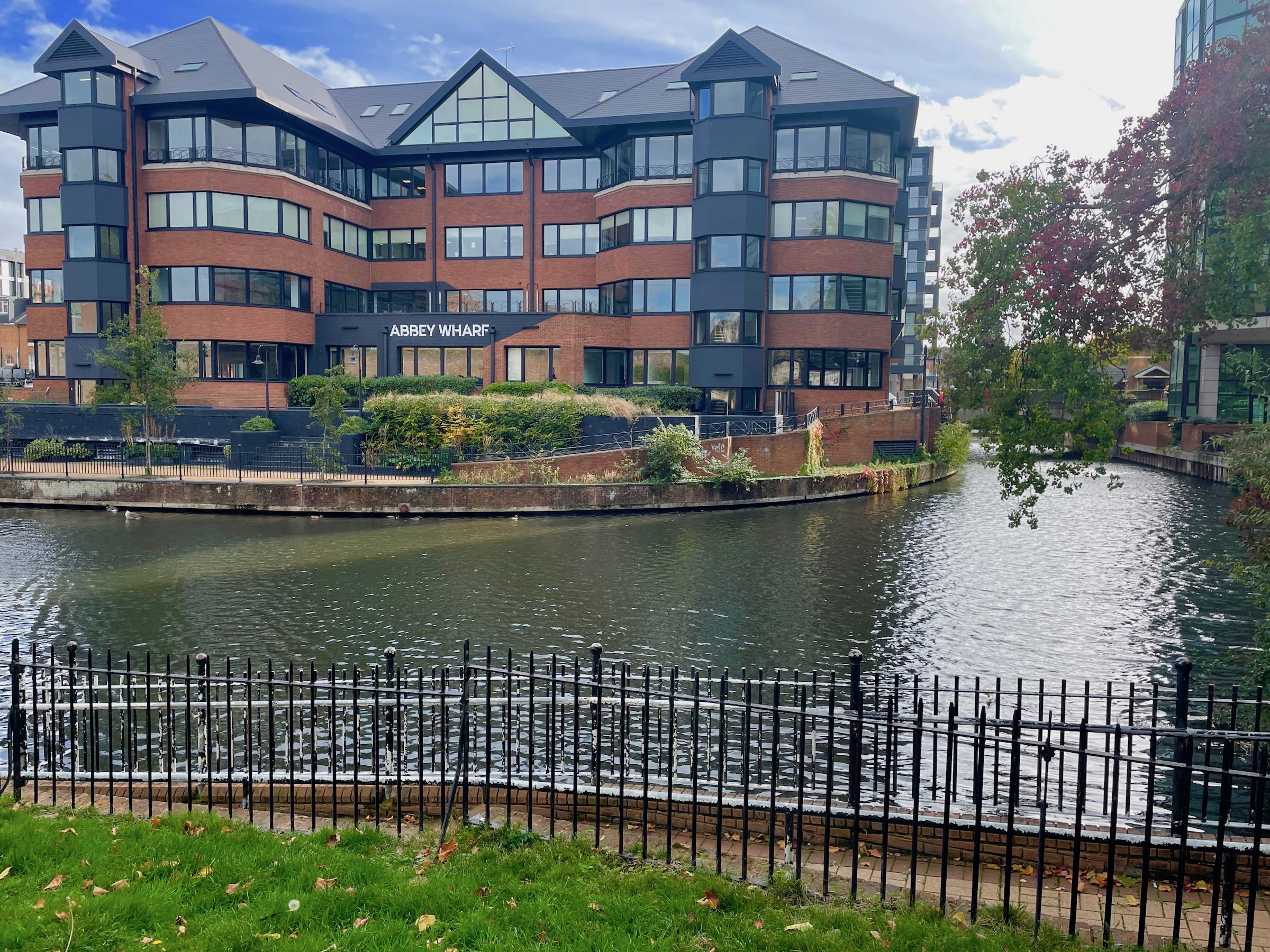
This is all that remains of the Chapter House where a momentous event occurred in 1185. Patriarch Heraclius of Jerusalem came all the way from the Holy Land to try to convince a western monarch to accept the Crown of Jerusalem and become defender of the Christian church from the Saracens. On this very spot Henry II wisely declined.
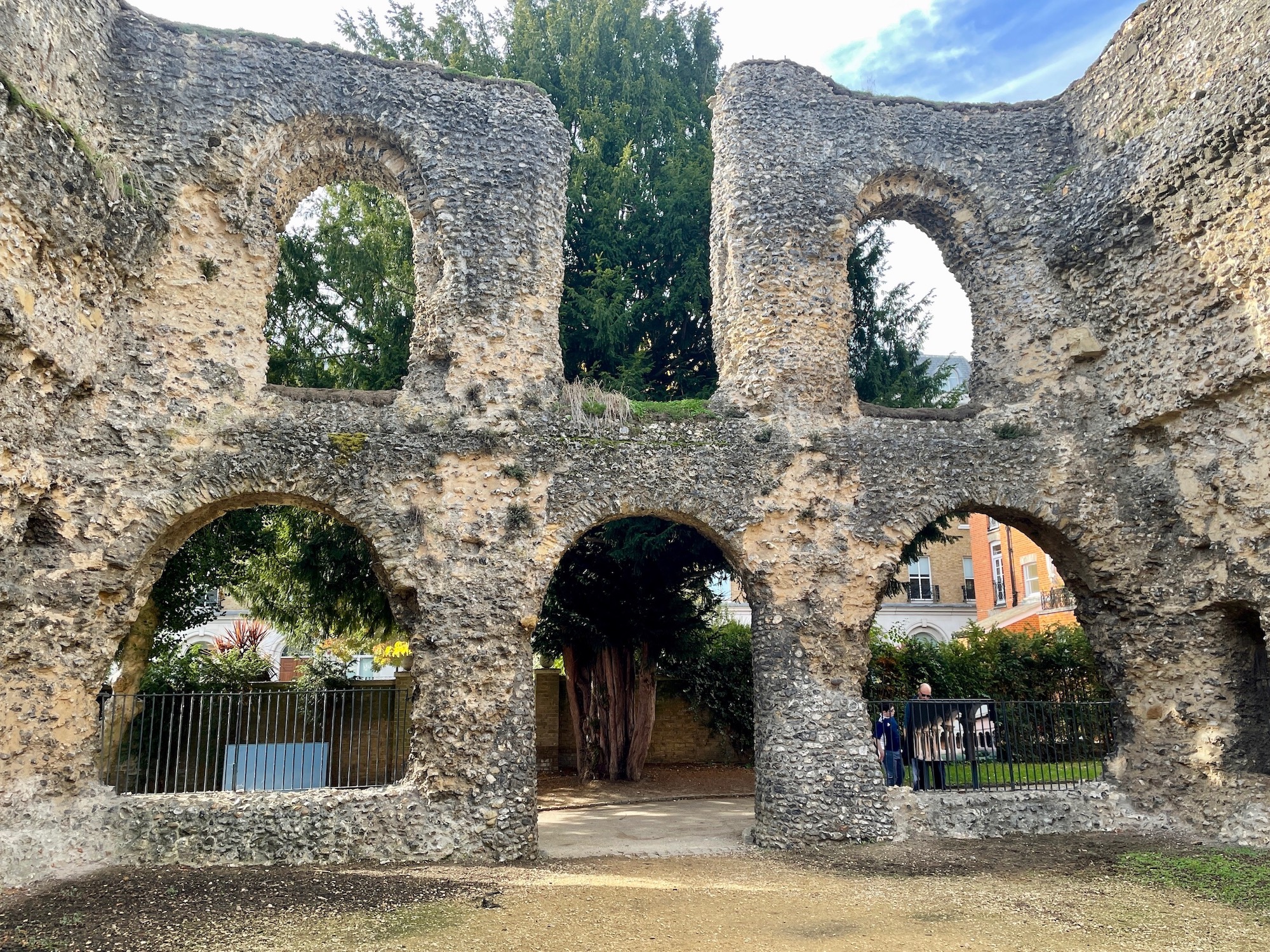
We conclude our visit to Reading Abbey by listening to a few songs. By turning that dial on this interpretive panel you can listen to a little of Chaucer’s Canterbury Tales, a Te Deum by Benedictine monks or what you’ll really want to hear, the oldest known English round song, Sumer is i-cumen in where you’ll hear the first use of the word ‘fart’ in a song. Now doesn’t that make a visit to Reading Abbey worth it?
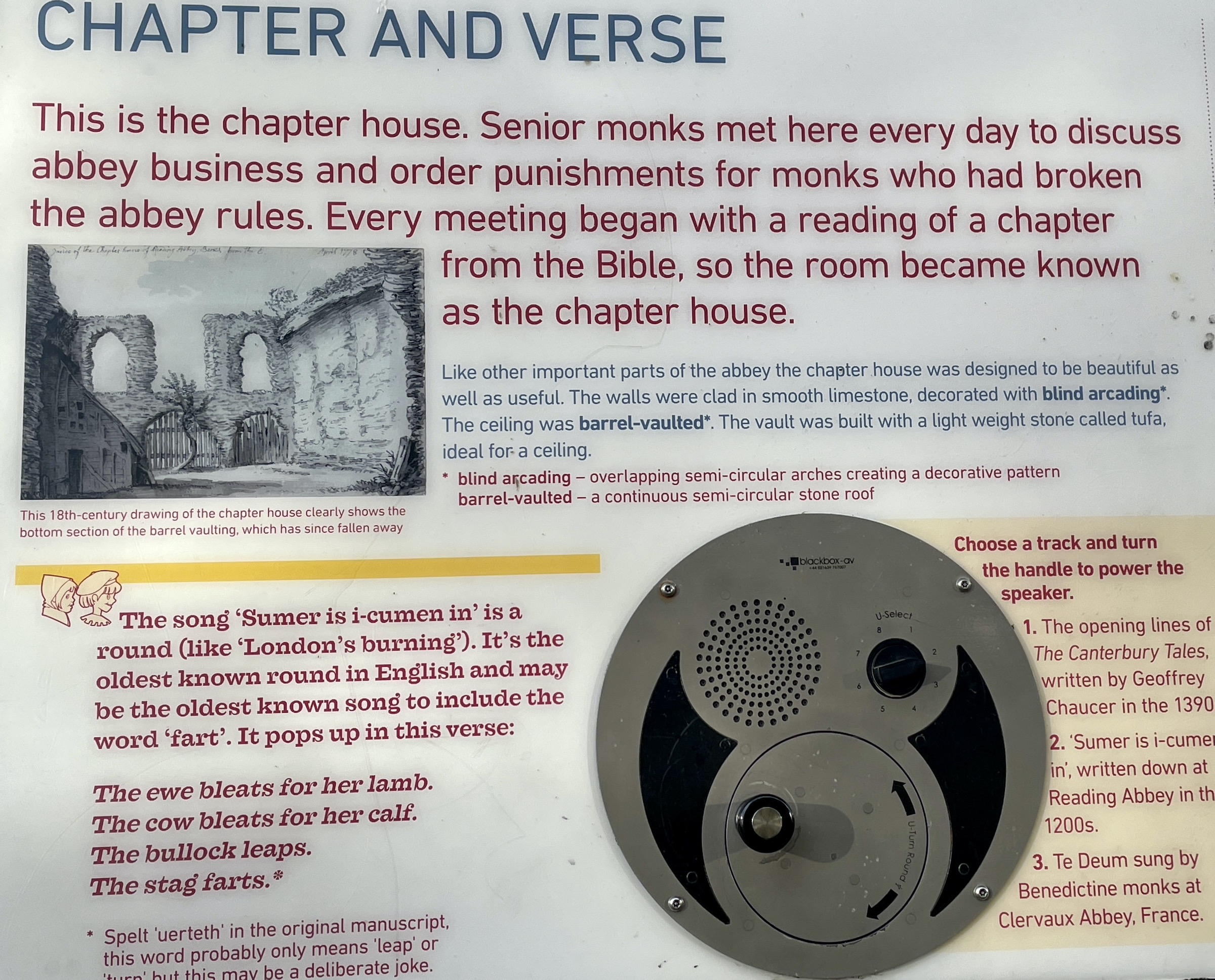
Oscar Wilde
However, we are not finished exploring Reading just yet. Nearby is the Oscar Wilde Memorial Walk which takes you alongside the walls of the former Reading Gaol where Wilde was imprisoned for 18 months from 1895-97.

At the time of his imprisonment Wilde was a world famous author and notorious character who made little effort to conceal his homosexuality. Despite his fame he was locked up with murderers and criminals of all stripes. Just after his release he wrote about the experience in The Ballad of Reading Gaol which is considered the best of his many poems. How ironic that what was supposed to be a lesson for all potential ‘deviants’ is now celebrated as a seminal event in the life of Oscar Wilde.
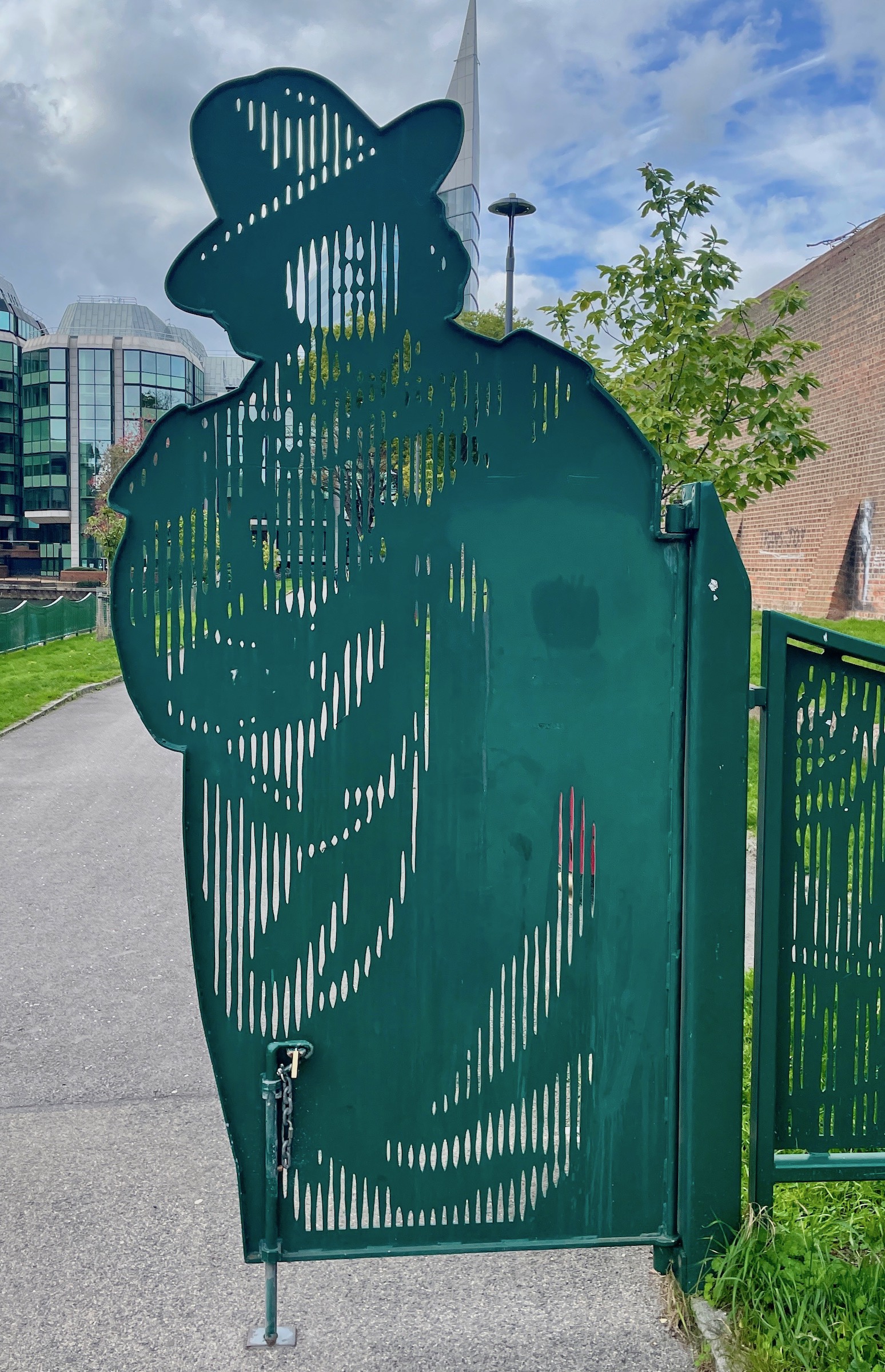
You might say that Wilde got the last laugh, but the reality was that the prison term affected him badly and he died of an untreated ear infection not long after the publication of the poem he wrote about his time in Reading Gaol. A few years ago I visited his grave in Pere Lachaise Cemetery in Paris which is one of the most popular in a place filled with celebrities of all kinds.
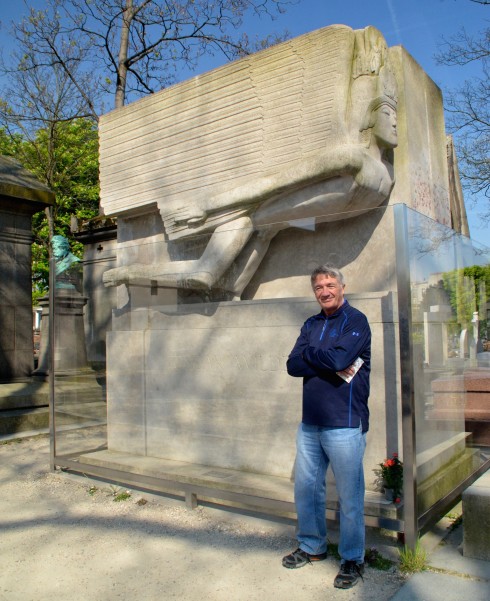
The next morning before boarding the train to Bath we walked the short distance to the Thames and Christchurch Meadows which you reach by crossing this bridge. It’s a beautiful place for a Sunday morning stroll.
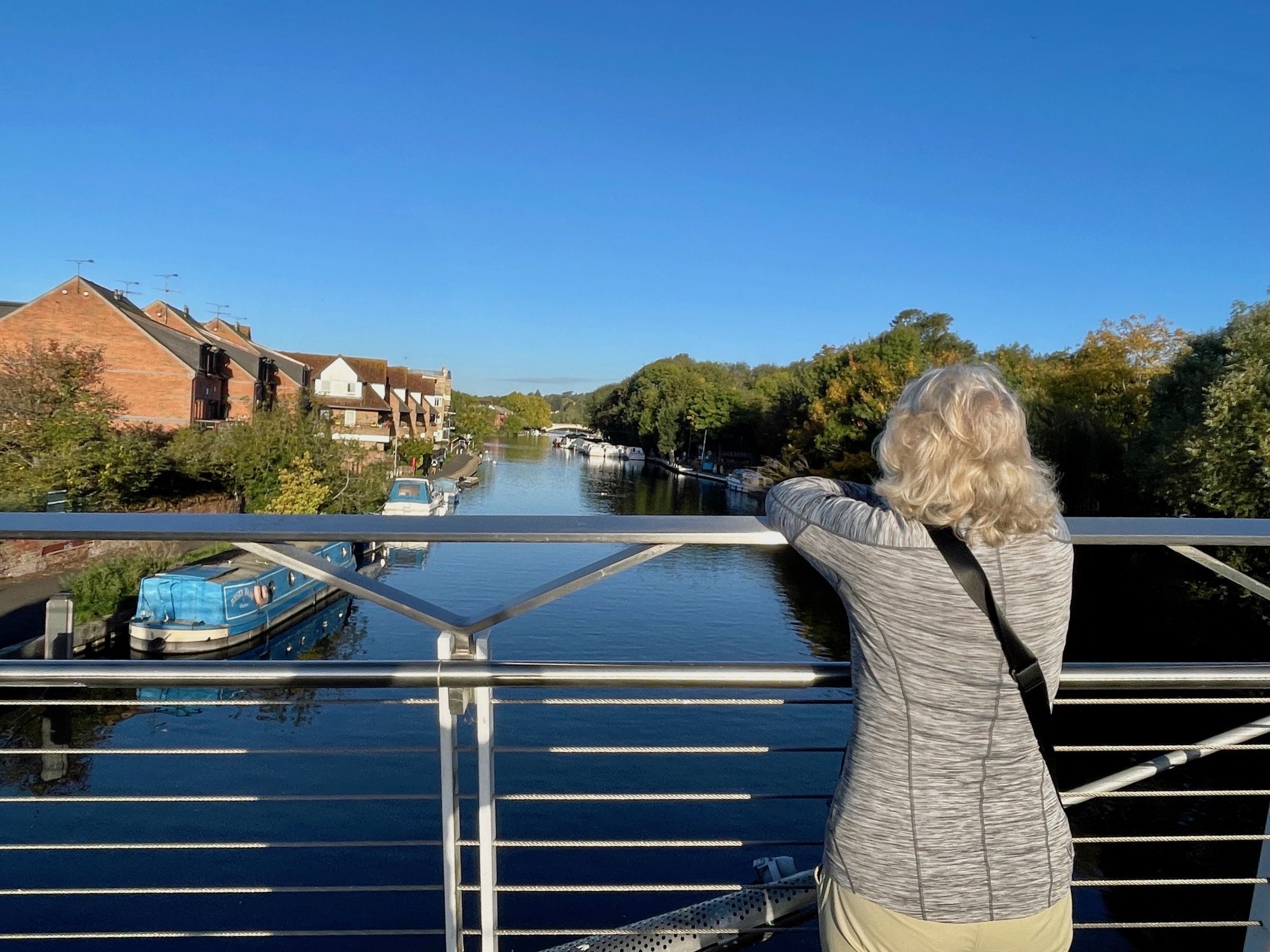
No mention of the Thames would be complete without a photo of a swan and that’s where I’ll sign off from Reading. I hope I have convinced you to visit this most interesting city on your next visit to England.

See you in Bath.

